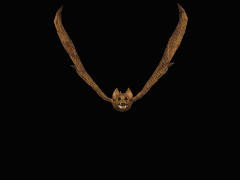


|
Hirundinidae:
The swallows and martins are a group of passerine birds in the family Hirundinidae which are characterised by their adaptation to aerial feeding. Swallow is also used in Europe as a synonym for the Barn Swallow.
This family comprises two subfamilies: Pseudochelidoninae (the river martins of the genus Pseudochelidon) and Hirundininae (all other swallows and martins). Within the Hirundiniae, the name martin tends to be used for the squarer-tailed species, and the name swallow for the more fork-tailed species; however, there is no scientific distinction between these two groups.
They have adapted to hunting insects on the wing by developing a slender streamlined body, and long pointed wings. Like the unrelated swifts and nightjars, which hunt in a similar way, they have short bills, but a wide gape. Their feet are designed for perching rather than walking, and the front toes are partially joined at the base. Many species have long tails. Swallows typically build mud nests close to overhead shelter in locations that are protected from both the weather and predators.
Many cave and cliff dwelling species of swallow nest in large colonies. In historical times, the introduction of man-made stone structures such as barns and bridges, together with forest clearance, has led to an abundance of colony sites around the globe, significantly increasing the breeding ranges of some species. Birds living in large colonies typically have to contend with both ectoparasites and conspecific nest parasitism. Old males benefit most from coloniality, since they are able to maintain their own nests and benefit from frequent extra-pair copulations. |
